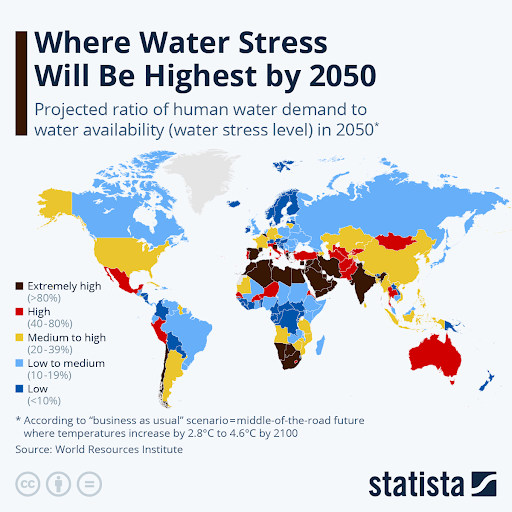Antarctica is turning green. Yes, ANTARCTICA is turning green with plant life. Although Antarctica is known for being the coldest place on earth. It may be hard to believe this, now it’s experiencing extreme heat events. As fossil fuels and other forms of pollution continue to heat the world, Antarctica will continue to turn more and more green. Recent satellite observations reveal a worrying trend: the Antarctic Peninsula is undergoing significant vegetation due to climate change. This shift is evident as plant life, specifically mosses, has increased in this harsh environment more than tenfold over the past four decades. In 1986, the area of vegetation covered less than 0.4 square miles, but by 2021, it had expanded to almost 5 square miles, indicating a rapid acceleration in growth over the recent years.
The recent flooding in the Sahara Desert represents a significant environmental event linked to the broader trends of climate change similar to Antarctica. For the first time in decades, the region experienced intense rainfall, forming large lakes in an area characterized by arid conditions. As scientists do more research on this phenomenon, it becomes increasingly evident that climate change is altering precipitation patterns and intensifying weather events across the globe, whether it’s getting hotter or it’s pouring more. It has been said that
The erratic weather events observed around the world are connected to human activities and the resultant climate change. As fossil fuel emissions continue to increase global temperatures, the water cycle is disrupted, leading to more severe and unpredictable rainfall patterns. In the case of the Sahara, some studies suggest that rising temperatures are pushing storm systems further north and allowing for more extreme rainfall. This shift not only contributes to flooding but also raises concerns about water availability and agricultural productivity in regions unaccustomed to such weather.
In both the Sahara Desert and the Antarctic Peninsula, the alarming impacts of climate change signify the urgent need for global awareness and action, as the rapid transformations of these ecosystems not only threaten biodiversity but also pose risks to the livelihoods, health, and safety of countless individuals whose lives are connected to these environments. That makes this even more important to recognize these issues and advocate for sustainable practices that can help further damage to our planet.
Works Cited
https://www.cnn.com/2024/10/14/weather/sahara-desert-floods-climate/index.html
https://www.cnn.com/2024/10/04/climate/antarctica-greening-vegetation-satellite-images/index.html
https://mylifesamovie.com/why-is-antarctica-turning-green/ (photo)





